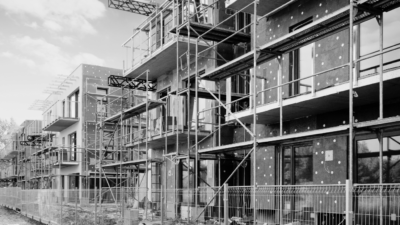Taylor Wimpey’s net private sales rate fell from 0.97 to 0.75 over the last year, including planned bulk deals, with cancellation rates edging marginally higher from 14% to 15%.
Excluding these bulk deals, the net private sales rate was 0.66. Taylor Wimpey CEO, Jennie Daly, said that “there’s been an improvement in sales rate as the spring season progressed.”
Total order book value stands at £2.4bn, down from £3.0bn.
The short-term land bank came in marginally lower this year, down from c.87k plots to c.86k plots, and the strategic land pipeline fell from c.145k plots to c.140k plots.
Build cost inflation remains high but has moderated from the 9-10% level reported in March – a trend that Taylor Wimpey expects to continue throughout the rest of 2023.
The group reiterated its previous guidance, expecting full-year completions to be in the 9,000 to 10,500 range, weighted toward the second half.
As previously announced, 2022’s final dividend of 4.78p per share will be paid on 12 May 2023, subject to shareholder approval.
The shares were broadly flat following the announcement.
Aarin Chiekrie, equity analyst at Hargreaves Lansdown, comments:
“It’s encouraging to see that demand’s recovered slightly during the spring selling season, supported by mortgage rates that have pulled back from recent highs.
As a result, Taylor Wimpey’s seen an uptick in sales rates since the sluggish tail-end of 2022, while pricing remained resilient.
There are also some underlying tailwinds supporting the longer-term market. Brits are ideologically committed to home ownership and the country has been in a prolonged period of housing undersupply, a trend that’s unlikely to change anytime soon.
With that in mind, Taylor Wimpey’s sizable landbank is a particular strength.
The group’s built a robust bank of potential projects – so the focus now is bringing these plots on-line.
But again, the group called out the difficult planning backdrop, which we expect to remain a thorn in the side throughout the rest of the year.
Against this, full-year completions are expected to land in the previously guided 9,000 to 10,500 range, representing a roughly 30% decline year-on-year, which will likely cause a big hit to profits.”

























Comments